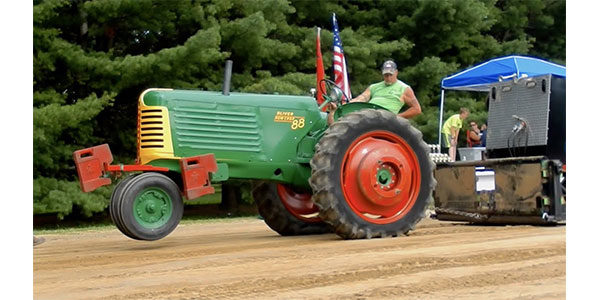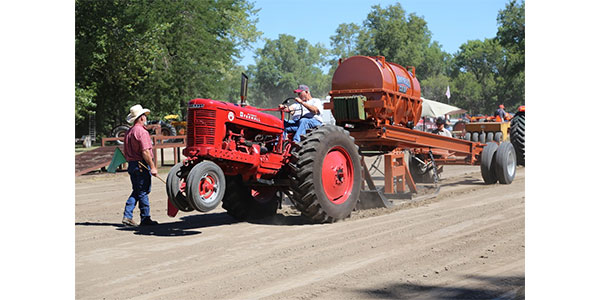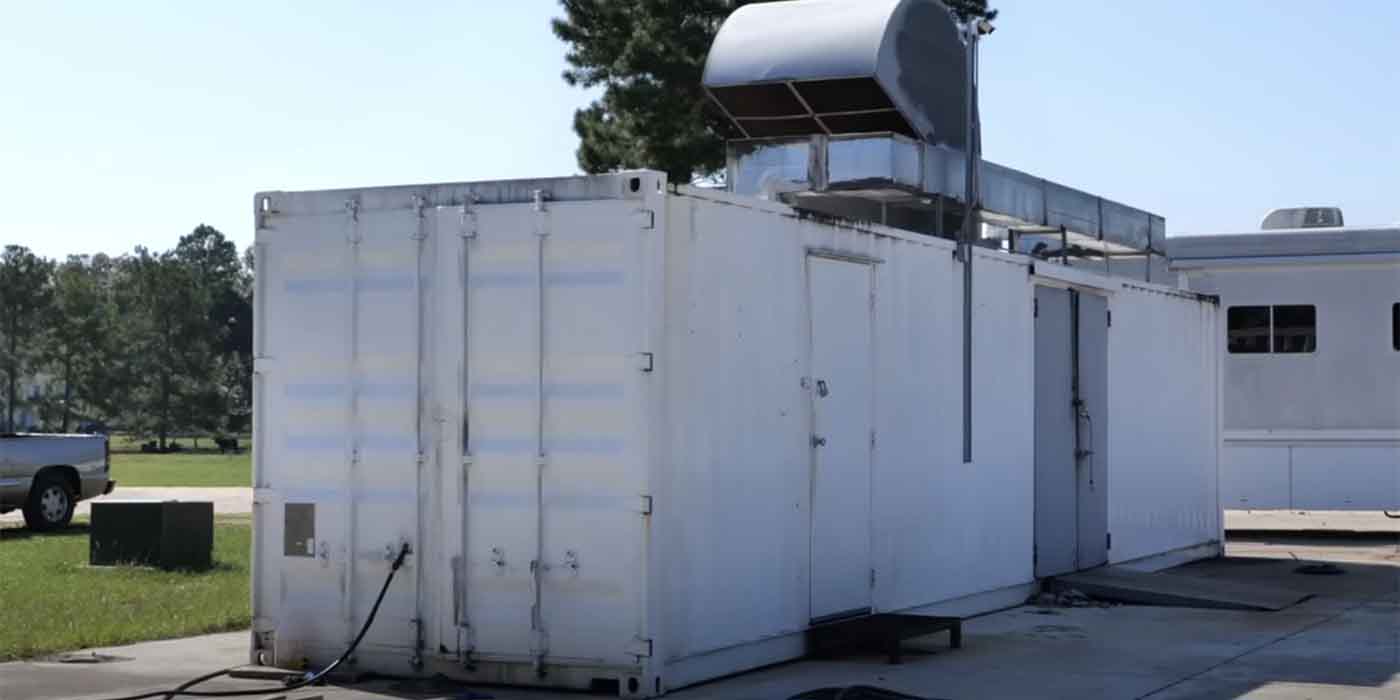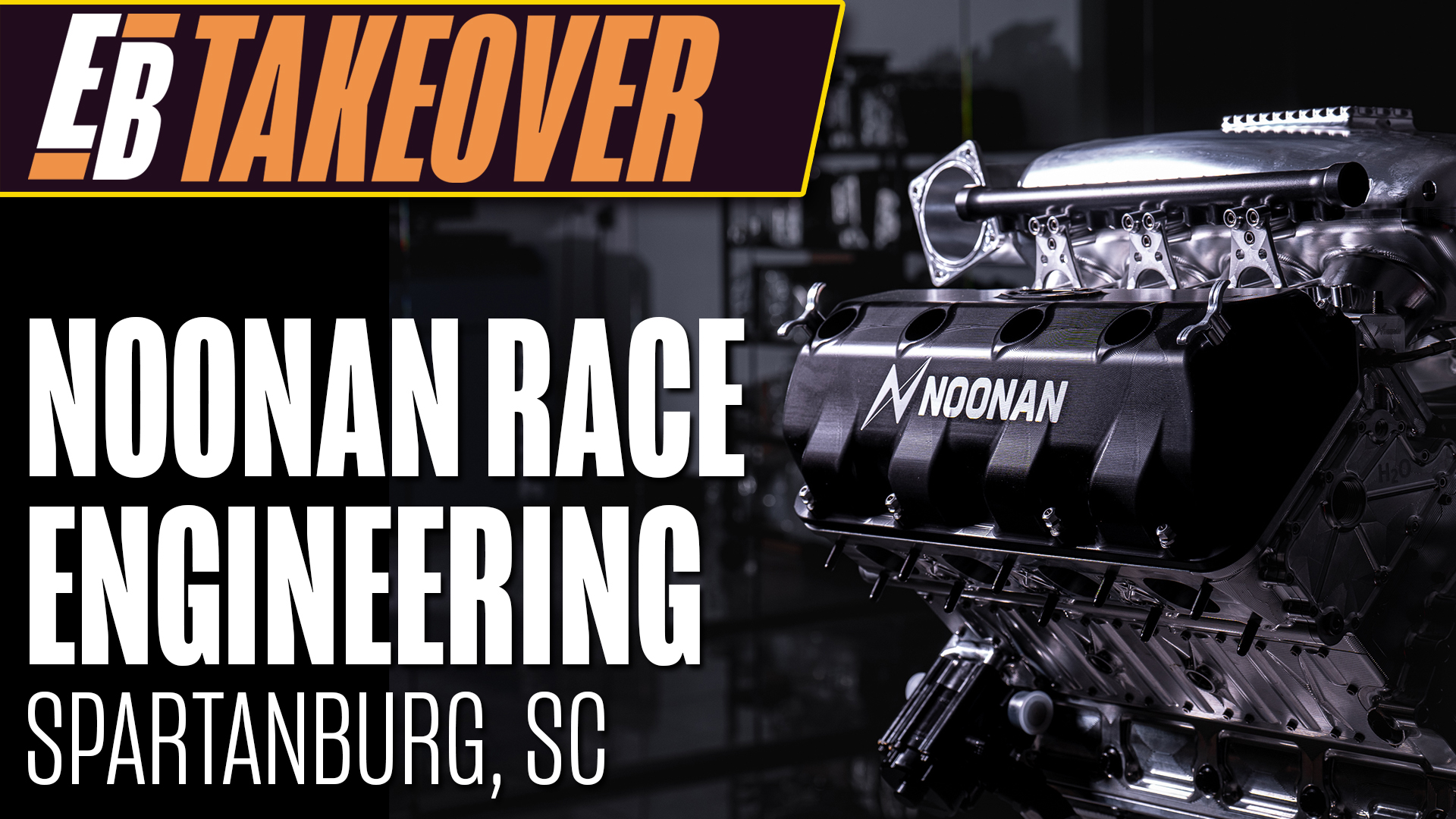Just as how car racing first began, when the first two tractors were sold, the new owners must have decided to have a contest to see which tractor could outpull the other. That mindset continues to this day – but now it includes not only antique tractors, but also hot rod pulling tractors with 5,000 horsepower engines.
I have always enjoyed learning the science of tractor pulling and how things worked. I want to know the little tricks they use to get more horsepower and torque. Just like in auto racing it is the attention to detail that separates the winners from the losers.

To make tractor pulling easier to understand let’s start with the basics. Using the stock antique tractor class as an example, let’s look at how a team needs to set up a pulling tractor for competition.
“I’m an engine builder,” you may be saying. “What does the chassis setup have to do with me?” Well, not only do many professional engine builders pull (read Editor Doug Kaufman’s article on page 78 for proof!), but the setup can affect the engine and vice versa. What you learn hear may help your customers!
The first thing to take note of is the hitch. Check out the rules of your pulling association, and modify your stock drawbar accordingly. You want your hitch as high off the ground as allowed by the rulebook, and your drawbar as narrow as technically allowed. This puts the hitch as close as possible to your tractor’s center of gravity, which helps keep all four wheels on the ground. Having an adjustable rear hitch is a good idea, as not all pulling associations follow the same rule book.
You want as much contact with the ground as you can get, so use the biggest tires allowed. If you are allowed 15.5×38, don’t run 13.6 tires. Remember tire diameter will also affect your final gear ratio.
You also want to use the widest rims allowed. You want as much tire bar tread on the ground as possible. Select tires with deep treads, which can really dig into the track. Firestone Field and Road (the old 151s) are a favorite, but any type of hard tire will be to your advantage.
While we’re talking about tires, be sure you pay attention to your air pressure. Contrary to popular belief, you’ll do best with a higher air pressure. Many people believe that lower-pressure tires allow the tractor to “dig in” to the earth because more tire tread is in contact with the track.
While this may be true in the beginning, any advantage from more tire tread on the track is outweighed by the drop in hitch height when under-inflated tires are put under pressure. Additionally, under-inflated tires lose their gripping power. When the treads are held rigid by proper inflation, they perform much better.
Read the rules to determine the highest air pressure allowed, but don’t automatically assume that the highest allowed pressure is right for your tires and your tractor. Between 13-15 pounds of pressure is considered just right. Use a combination of original manufacturer recommendations and your own experimentation to find the right pressure for your tires.
If the setup is right, the tractor’s front wheels will eventually lift off the ground 4-6 inches as you pull. When this happens, you’ll be unable to use your steering wheel. So it is important to make sure that your tractor is ready to pull straight down the track, rather than wasting power veering off in the wrong direction.
You can get a nice straight pull by using a tractor with a narrow wheelbase. Do not spread the tires…instead, keep the tractor wheelbase as narrow as possible.
You want to be sure you have the exact same air pressure in both rear tires, and make sure that both rear tires weigh the same. Drive one tire onto a scale and weigh it. Then turn the tractor around and weigh the other side.
Tractors aren’t usually built to be symmetrical; often times, one side has the ring and pinion, the live power clutch, which will make one side heavier than the other.
You will need to add weight to the lighter side so that both sides are even. The lighter your tractor is overall, the more crucial this becomes.
Of course, you can use braking techniques to “steer” your tractor when the front wheels are off the ground, but that is a waste of energy. Why brake and slow your forward momentum when you are trying to pull?
Next, be sure the tractor is perfectly tuned. Use a dyno to test your horsepower and compare your numbers to the factory specs.
This will help you adjust the timing and carburetor main jet to get maximum horsepower. You can usually gain 5-6 horsepower by fine tuning using a dyno, and that can be the difference between first and second place. Similarly, always start the season with fresh spark plugs, fresh gas and a clean fuel filter.
The biggest mistake most rookie tractor pullers make is pulling in too high a gear, and getting into the throttle too early and spinning out. The old timers say 1st gear is always your best bet, it gives the tires time to bite. Don’t hit the throttle too fast, but don’t let it pull in idle either. Use 1st gear at an eighth- or quarter-throttle to start out. Ease the clutch out on the start so you can ease into the weight of the sled. Slow and steady means you’ll also break fewer parts.

Acceleration (drag racing) or heavy pulling takes low-end torque. Antique tractor pulling is “supposed” to be done at Stock rpm so you either need a large cubic inch engine like a two-cylinder John Deere, or a smaller engine with higher compression to generate more torque, which translates into more horsepower at its rated rpm.
If you have two tractors each making 100 HP, but one doing it at 400 rpm and the other doing it at 1,200 rpm, the low rpm tractor is making three times the low-end torque, which is what you need to get a load moving, or to keep it moving as the sled advances and the RPMs drop with the extra load.
The 1,200 rpm engine isn’t going to be making its 100 HP when it pulls down to 800 rpm and will have a lot less torque at the lower rpm than the lower speed, 100 HP engine has.
These basic rules apply to every class of pulling tractor as well. As you get into the higher horsepower heavyweight class tractor, the little details become even more important. For example, a pulling tractor that has two 5,000 horsepower engines connected together, must have each engine putting out the exact same amount of horsepower and be timed exactly the same so one engine is not dragging down the other! That is a major challenge. Now imagine a hot rod tractor with four or five engines!
As with most competition, nothing stays “stock” for long, including antique pulling tractors. To win, you have to get all of your setup right and learn your interchange options for the brand of tractor you are running.
The Farmall H and M model tractors are popular antique pulling tractors in part because they are inexpensive to purchase and easy to upgrade to make more horsepower. To gain an advantage, you have to do a little homework. International Harvester built various rear end combinations for different tractor applications. The most popular pulling tractor swap is a rear end from a sugar cane tractor that had a low creeper gear in it, a pretty sneaky advantage.
Then there is the Farmall engine itself. First, change the cylinder head to one from a Farmall model 400 gas tractor, that is then milled .125˝, with valves installed from an International 466 tractor, adding double springs and machining the ports for correct alignment. Add an LP (propane) intake manifold milled to match the head and manifold ports. Use a copper head gasket set from an 806 tractor.
Then use a carburetor from a model 400, open the jets up, add a Rocket governor, electronic ignition and run at least 105 octane gasoline. Time the governor with the carburetor, with a larger fuel line from bottom tank to carb. Add an electric fuel pump. This combination will yield 95-100 horsepower, more than double the stock 45 horsepower.
There are also different crankshafts you can swap out to build a “stroker” motor for your customer’s Farmall. Most of the antique tractor pullers do not spend big dollars building tractors for the stock classes; they just do their homework and learn what parts to swap around to make things work. Of course, the sky is the limit. You can add roller rockers, different aftermarket cams, custom-built cylinder heads, along with all sorts of performance goodies – it just takes money!
It is the same for the popular two cylinder John Deere tractors – both the diesel and gas versions. The blocks get bored out, Chevrolet pistons are added along with roller rockers, a little cylinder head work, different cams and crankshafts and the compression goes from a stock 7:1 to as high as 10:1 or more, and the horsepower more than doubles. Being light in weight, the John Deere two cylinder tractors make fun puller tractors because they made a lot of torque stock.
They really become torque monsters with a little upgrade and become difficult to beat in the lighter weight classes.
Many of the big time, professional tractor pullers started pulling antique tractors in their younger days to learn the importance of tractor setup and how to improve the performance of the stock tractors. Just as in drag racing, it is a contest to figure out the next performance advantage, and like drag racing they experiment with everything from ignition, to fuel, to air flow, and they study parts books cover to cover looking for an advantage.
All of that effort pays off as they get into the big leagues and build bigger, more powerful tractors. Knowing some of the basic preparation and setups makes watching tractor pulls more interesting – and may help you build more stout pulling tractors.












